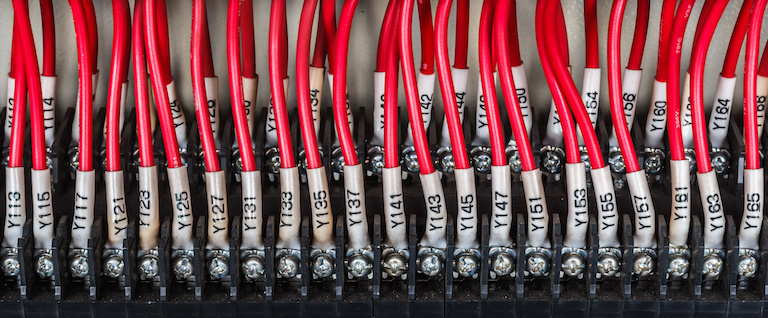When designing a PLC control panel, one of the fundamental decisions is how to provide overcurrent protection for I/O modules. Should each I/O module be fused with a single fuse, or should each I/O point be fused individually?
Here are 11 things to consider when deciding how and when to fuse I/O points.
1. Always follow specific customer project requirements and specifications when they are provided. Note that many times it is appropriate from an electrical standpoint to fuse each I/O module with a single fuse. However, customers may require individual fusing per I/O point (or per field device) so that one fault only disrupts the one point.
2. Review and consult I/O module product documentation for any specific product details and requirements to ensure that the I/O modules are being installed in a compliant manner with manufacturer’s minimum recommendations.
3. Fusing is generally preferred over circuit breakers for I/O protection because fuses interrupt faults more quickly than circuit breakers. Fuses are more effective at minimizing let through energy and therefore offer better protection for downstream devices. Fuses are also generally more cost effective in the necessary size ranges. Additionally, small form factor fuses for I/O are typically used in a disconnecting style terminal blocks which allow the field wiring to be conveniently isolated from the control panel for startup, testing, and maintenance purposes.
4. At a minimum, I/O fusing should be as follows:
- Analog input modules will have one fuse per module.
- Analog output modules/points will not be fused since they are generally self-protected.
- Digital input modules will have one fuse per module.
- Digital output modules will have one fuse per module.
5. Check the I/O module documentation for on board fusing details and make sure any external fuses coordinate with on board module fuses. If I/O modules are electronically fused or current limited there should not be a need to use external fuses.
6. Be aware that in food production or facilities that limit glass, glass fuses may not be allowed. Ceramic fuses are generally a better choice in most applications.
7. Fuse selection should give consideration to minimizing the number of replacement parts which must be stocked. Since fuses are replaceable items, there should also be consideration to selecting non-overlapping fuse sizes to facilitate proper replacement. Be aware that extremely low amperage fuses are expensive and usually not warranted. Generally, fuses for I/O will be fast-acting type for better protection (whereas power distribution in a panel will require use of time-delay fuses).
8. The 5x20mm fuse size is popular and often used for I/O fusing since it offers a minimum footprint size that fits well with traditional cage-type terminal blocks. However, some customers may require the 0.25 in x1.25 in format. Fuse holders are preferred to be blown fuse indicating type if budget allows, with touch-safe swing-out arms where possible. Indicating type fuse holders require different types depending on voltage level and voltage type.
9. Output modules have an overall module current rating and a per point current rating. For example, a module may have a total current rating of 8 amps, but each output is only rated for 2 amps. Going by the book, you probably don\’t want to limit your total current at 2 amps, so you put an 8 amp fuse on the module supply, and 2 amp fuses on each output. There may also be times when you do not want to fuse a single control point, but rather want a whole group fused together for safety or other sound engineering reasons. If several I/O points of any type are connected to the same field device, it may be preferable to protect all of these points with a single fuse so that there is a single disconnection point for the device.
10. Wire sizing could influence fuse sizing. Make sure that the fuse size selected does not exceed the amperage rating of the wire.
11. Be aware of the ramifications for fusing I/O in safety systems. A blown fuse can cause a false system shutdown and add additional points of failure in a system. This is especially true for non-redundant I/O in safety systems.
Do you have published standards and practices? If not, by following the suggestions above, you can be assured that your I/O modules, field devices and control panel wiring will be protected.

